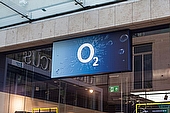Home > Mobile > News > O2 investing in rural 4G mobile broadband
O2 investing in rural 4G mobile broadband
Network operator O2 is planning more investment in the expansion of services to rural areas, which could benefit around 250,000 residents by the end of 2018.
UK mobile operator, O2, are planning further expansion of their 4G services, with an announced £45m of investment planned over the next two months. They say this investment will benefit an additional 339 rural communities across the UK.
The operator claims that planned improvements to its 4G infrastructure will bring direct benefit to around 250,000 residents.
This comes a month after Ofcom published technical advice to the Government regarding options for increasing mobile connectivity, and just weeks after MPs offered similar recommendations.

A potential £45m boost to the economy
Based on the findings of a report by Development Economics, commissioned by O2, the carrier claims that their investment in improved connectivity could add a substantial boost to the UK economy as a whole.
The report, entitled 'The Benefits of Connecting Rural Communities' proposed that an improved 4G connection in isolated areas would benefit around 14,000 businesses in these locations.
Such improvements, it said, could add revenue totalling as much as £141m a year to their profitability. A year later, this additional revenue could add as much as £44.6m to the UK's economy, as well as adding a growth in employment of 31%.
Statistics such as these are somewhat difficult to predict and should probably be taken as 'best case scenarios', not necessarily as realistic outcomes.
How much impact will this project have?
While an announcement of more connectivity is certainly welcome, a lack of clarity from O2 about the locations in which it will be effective leaves users none the wiser as to its real impact. No list of towns or villages have, as yet, been provided, so it's hard to evaluate how successful this will really be.
O2 have also neglected to identify whether the areas they are targeting are already served by other operators such as EE, Three or Vodafone. They have, however, identified that they will be deploying the 800 MHz spectrum for this particular roll out.
800 MHz is generally preferable in rural areas, as a lower frequency spectrum allows a single cell tower to cover a much larger area. The capacity is generally lower than a 2.3 GHz band, but in areas of low population density it should provide a reliable, solid signal.
The rural connection
The mobile industry currently has a strong focus on getting rural communities connected to fast services. Recently the RAC Foundation uncovered almost 50,000 miles of road in the UK which had no mobile coverage at all, showing potential dangers for stranded motorists.
Last year, users in Scotland were connected to faster mobile services by O2, when the carrier invested heavily in new masts and generators. This served to expand services to rural areas, connecting 800 additional new towns and villages to 4G.
The operator has said they are investing in the region of £2m a day to improve their network. Earlier this year they were evaluated as having achieved their requirement of 98% indoor 4G coverage across the UK.
In terms of landmass, O2 currently reach 90% of the UK. In comparison, EE have set a target to reach 95% of the UK's landmass by 2020.
In the Ofcom auction of 4G and 5G airwaves earlier this year, Telefonica UK Limited, the parent company of O2, won all 40 MHz of 2.3 GHz (4G) spectrum. They also secured 40 MHz of 3.4 GHz spectrum (5G), putting them in a great position to offer faster services to more locations in the future.
Get insider tips and the latest offers in our newsletter

We are independent of all of the products and services we compare.

We order our comparison tables by price or feature and never by referral revenue.

We donate at least 5% of our profits to charity, and we have a climate positive workforce.
Latest News

19 August 2024
New O2 Essential Plan for those on social benefits
06 August 2024
Three UK moves to pounds and pence annual price rises
11 July 2024
Sky Mobile launches their first unlimited data planGet insider tips and the latest offers in our newsletter

